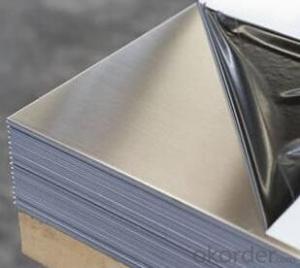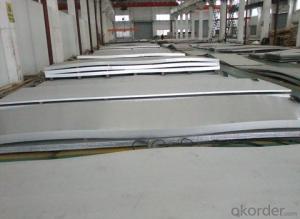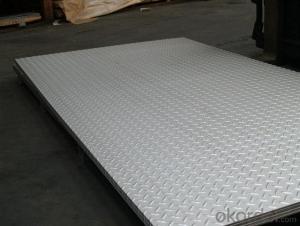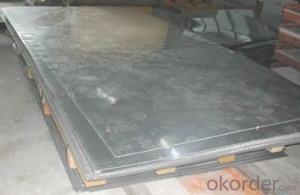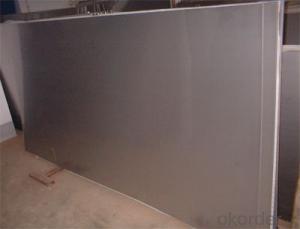Stainless steel plate/sheet 304,201,310S,309S,316L,321,304L,410,420,430,444
- Loading Port:
- Shanghai
- Payment Terms:
- TT OR LC
- Min Order Qty:
- 500 m.t
- Supply Capability:
- 5000000 m.t/month
OKorder Service Pledge
OKorder Financial Service
You Might Also Like
Stainless steel plate/sheet
304,201,202,310S,309S,316L,316Ti,321,304L,410,420,430,444,443,409L,904L
| Description | steel sheet,hot rolled steel sheet,cold rolled steel sheet, steel sheet,sheet,steel plate |
| Standard | ASME, ASTM, EN ,BS,GB,DIN, JIS etc |
| Application | Steel sheet applies to construction field, ships building industry, petroleum & chemical industries, war and electricity industries, food processing and medical industry, boiler heat exchanger, machinery and hardware fields. |
| Packaging | Standard export sea-worthy packing |
| Delivery time | 10-30 days |
| Note | Our company has cooperative relation between the domestic agents. Stainless steel sheet can be made accordingto the customers requirements. Fasten delivery. Quality assured. |
| Quality | No.1 |
| Productivity | 1200ton/day |
| Contacts | If you have any question,please feel free contact me. |
Stainless steel sheet surface finish characteristics
| Surface finish | Characteristics and application |
| 2B | The surface brightness and flatness of no2B is better than no2D. then through a special surface treatment to improve its mechanical properties,No2B could nearly satisfy comprehensive uses. |
| No.1 | Polished with abrasive belt of grit#100-#200, have better brightness with discontinuous coarse stria, used as inner and external ornaments for building, electrical appliances and kitchen utensils etc. |
| No.4 | Polished with abrasive belt of grit #150-#180,have better brightness with discontinuous coarse stria, but thinner than No3, are used as bathtub buildings inner and external ornaments electrical appliances kitchen utensils and food processing equipment etc. |
| HL | Polished with abrasive belt of grit #150-#320 on the NO.4 finish and has continuous streaks, mainly used as buildings ornaments elevators, door of building, frontal plate etc. |
| BA | Cold rolled, bright annealed and skin-passed, the product have excellent brightness and good reflexivity like mirror, kitchen apparatus, ornament etc. |
| 8K |
Product Shows :
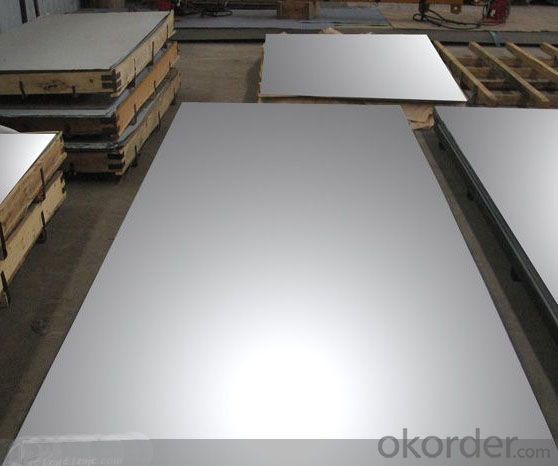

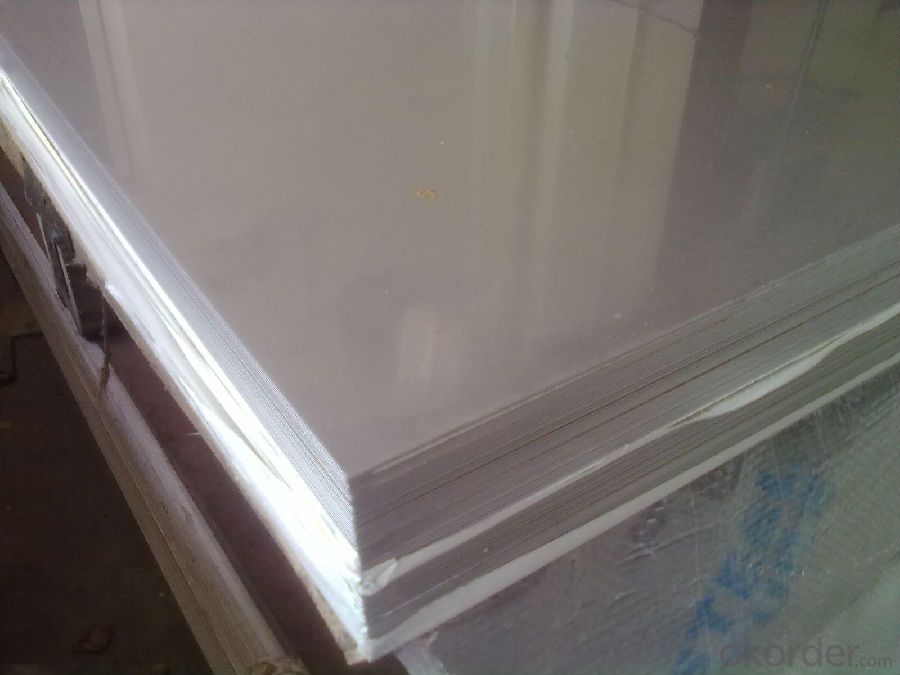
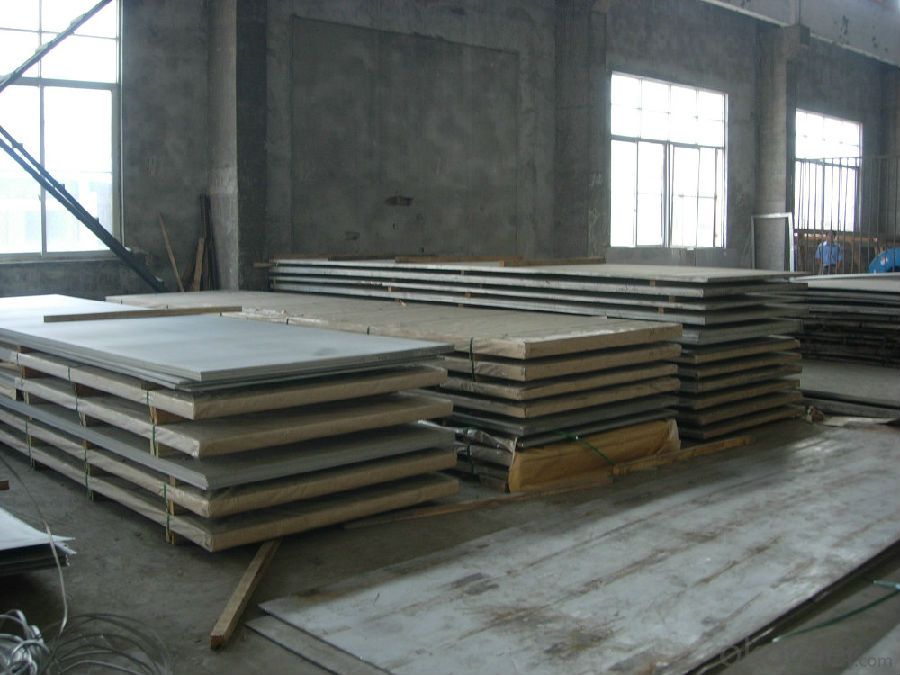

Application :
•Escalator, Elevator, Doors
•Furniture
•Production tools, Kitchen appliances, freezers, cold rooms
•Auto Parts
•Machinery and Packaging
•Equipment and Medical devices
•Transport system
Packaging and Loading

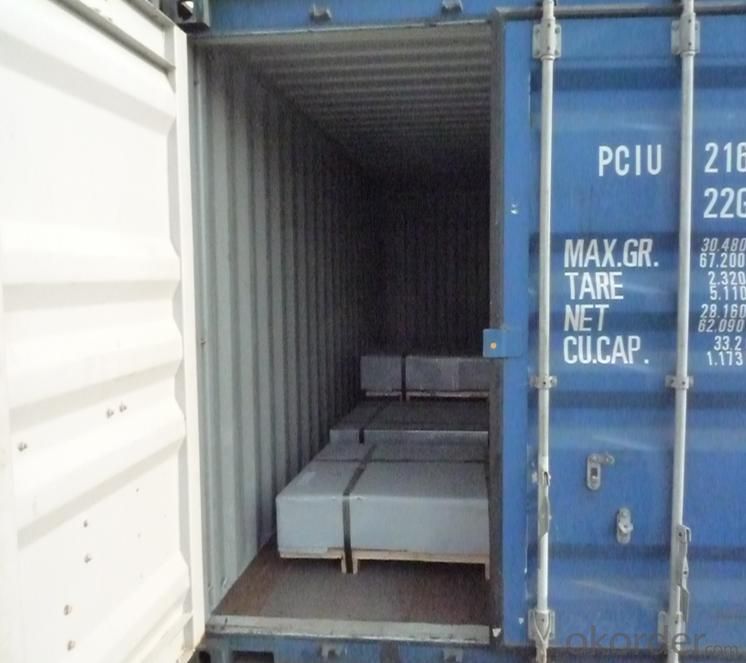
- Q:What is 3042B stainless steel?
- 2B: the fog surface; after cold rolling, after heat treatment and acid washing, the finishing surface is made to be a fair light. As the surface is smooth, easy to re grinding, make the surface more bright, wide range of uses, such as tableware, building materials, etc.. Surface treatment with improved mechanical properties almost meets all uses.Stainless steel can be divided into Cr series (400 Series), Cr - Ni series (300 Series), Cr - Mn - Ni (200 Series), Heat-Resisting Chromium Alloy Steel (500 Series) and precipitation hardening system (600 series).
- Q:How do stainless steel sheets differ from regular steel sheets?
- Stainless steel sheets differ from regular steel sheets in several key aspects. Firstly, stainless steel is an alloy that contains a minimum of 10.5% chromium by mass. This chromium content forms a protective passive layer on the surface of the steel, which helps to prevent corrosion and staining. In contrast, regular steel sheets are prone to rusting and corrosion when exposed to moisture or certain chemicals. Secondly, stainless steel sheets have a higher resistance to heat and oxidation compared to regular steel sheets. This makes stainless steel an ideal choice for applications that require high temperature resistance, such as industrial furnaces or automotive exhaust systems. Thirdly, stainless steel sheets possess excellent strength and durability, making them suitable for various structural and industrial applications. Regular steel sheets may have lower strength and durability, depending on their composition and manufacturing process. Additionally, stainless steel sheets have an attractive appearance due to their smooth and shiny surface. This aesthetic quality makes stainless steel sheets a popular choice in architectural, interior design, and decorative applications. Lastly, stainless steel sheets are known for their hygienic properties, as they are non-porous and easy to clean. This makes them commonly used in industries with strict hygiene requirements, such as food processing, pharmaceuticals, and healthcare. Overall, the major differences between stainless steel sheets and regular steel sheets lie in their corrosion resistance, heat resistance, strength, appearance, and hygiene properties. These unique characteristics make stainless steel sheets a preferred material for many industries and applications.
- Q:How do you prevent warping of stainless steel sheets?
- To prevent warping of stainless steel sheets, it is important to handle and store them properly. This includes avoiding excessive heat exposure, ensuring even distribution of weight during storage, and using appropriate support structures during fabrication processes to prevent distortion. Additionally, controlling the cooling process after welding or cutting stainless steel sheets can also help minimize warping.
- Q:What is the maximum width available for stainless steel sheets?
- The stainless steel sheet's maximum width can differ based on the manufacturer and supplier. Typically, you can find stainless steel sheets with widths between 36 inches (0.91 meters) and 72 inches (1.83 meters). Certain manufacturers may provide wider options for specialized purposes. To ensure accuracy, it's recommended to consult the specific supplier or manufacturer regarding the maximum width as it may vary depending on their production capabilities and product range.
- Q:What are the benefits of using perforated stainless steel sheets?
- Perforated stainless steel sheets offer several benefits. Firstly, they provide excellent ventilation and airflow, making them ideal for applications where aeration is crucial, such as in HVAC systems or industrial structures. Secondly, the perforations allow for enhanced visibility, enabling the passage of light and maintaining a clear line of sight. Additionally, the perforations can aid in noise reduction by absorbing sound waves. Lastly, stainless steel sheets are highly durable, corrosion-resistant, and easy to maintain, making them a cost-effective solution for various industries.
- Q:Can stainless steel sheets be used for outdoor signage?
- Yes, stainless steel sheets can be used for outdoor signage. Stainless steel is a durable and corrosion-resistant material that can withstand harsh weather conditions and maintain its appearance over time. It is commonly used in outdoor signage due to its ability to resist rust, fading, and damage from exposure to sunlight, rain, snow, and other environmental elements. Additionally, stainless steel sheets can be customized with various finishes, such as brushed or polished, to enhance their visual appeal and make them suitable for any outdoor signage application.
- Q:How do I prevent intergranular corrosion on stainless steel sheets?
- To prevent intergranular corrosion on stainless steel sheets, it is essential to choose the right grade of stainless steel that is resistant to intergranular corrosion, such as the low carbon versions like type 304L or 316L. Additionally, heat treatment processes like annealing or solution annealing can help restore the corrosion resistance of the stainless steel. Using proper welding techniques, such as using low heat input and maintaining a suitable interpass temperature, can also prevent intergranular corrosion. Finally, avoiding exposure to corrosive environments, especially those containing chlorides, can significantly reduce the risk of intergranular corrosion on stainless steel sheets.
- Q:What is the water resistance of stainless steel sheets?
- The water resistance of stainless steel sheets may vary depending on the grade and finish of the stainless steel. In general, stainless steel exhibits excellent resistance to water, making it suitable for a variety of wet and humid environments. The chromium content in stainless steel gives it inherent corrosion resistance, resulting in the formation of a protective oxide layer on the steel surface. This oxide layer acts as a barrier, preventing water and other corrosive substances from reaching the underlying metal. However, the water resistance can be further enhanced by selecting stainless steel grades with higher corrosion resistance, such as 316 or 904L. Moreover, the water resistance of stainless steel sheets can also be influenced by their surface finish. Smooth and polished finishes tend to offer better water resistance compared to rougher finishes, as they provide fewer crevices for water accumulation, which could potentially lead to corrosion. In summary, stainless steel sheets provide excellent water resistance and find extensive use in marine environments, food processing facilities, and outdoor architectural structures.
- Q:What are the fire resistance properties of stainless steel sheets?
- Due to their unique composition and structure, stainless steel sheets possess excellent fire resistance properties. Unlike other materials, stainless steel does not easily burn or ignite when exposed to high temperatures. This is primarily because stainless steel contains a high amount of chromium, which generates a thin, protective oxide layer on its surface upon exposure to air. This oxide layer acts as a barrier, preventing the underlying steel from reacting with oxygen and further enhancing its fire resistance. Moreover, stainless steel exhibits a high melting point, typically ranging from 1400-1450°C (2552-2642°F), which surpasses that of most common building materials. Consequently, stainless steel sheets can endure extreme heat without distorting or compromising their structural integrity, thereby offering supplementary fire protection. Furthermore, stainless steel is non-combustible, signifying that it does not contribute to the fuel load of a fire. This attribute holds significant importance in construction and industrial applications, where fire safety remains a paramount concern. In conclusion, the fire resistance properties of stainless steel sheets render them an optimal choice for diverse applications, including building construction, transportation, and industrial settings, where fire protection is imperative.
- Q:What does stainless steel sheet S2 stand for?
- Stainless steel plate has a smooth surface, high plasticity, toughness and mechanical strength, corrosion of acid, alkaline gas, solution and other medium.
1. Manufacturer Overview |
|
|---|---|
| Location | |
| Year Established | |
| Annual Output Value | |
| Main Markets | |
| Company Certifications | |
2. Manufacturer Certificates |
|
|---|---|
| a) Certification Name | |
| Range | |
| Reference | |
| Validity Period | |
3. Manufacturer Capability |
|
|---|---|
| a)Trade Capacity | |
| Nearest Port | |
| Export Percentage | |
| No.of Employees in Trade Department | |
| Language Spoken: | |
| b)Factory Information | |
| Factory Size: | |
| No. of Production Lines | |
| Contract Manufacturing | |
| Product Price Range | |
Send your message to us
Stainless steel plate/sheet 304,201,310S,309S,316L,321,304L,410,420,430,444
- Loading Port:
- Shanghai
- Payment Terms:
- TT OR LC
- Min Order Qty:
- 500 m.t
- Supply Capability:
- 5000000 m.t/month
OKorder Service Pledge
OKorder Financial Service
Similar products
New products
Hot products
Related keywords
